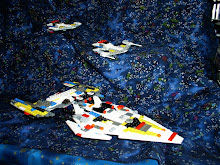Backing up, it’s not something just your car does. It’s something you should do with your computer. Parts fail in your car, and parts fail in computers too. The hard drive in your computer is a spinning disk of metal that looks like a record player. A metal arm with a small magnet hovers over the disk as it spins. The disk spins on an electric motor with bearings in it. This motor can turn at speeds up to 15,000 revolutions per minute. These bearings can fail leading to a grinding noise. This can be called a variety of things and lead to a variety of problems. Crashes, Blue Screens of Death, missing files, weird behavior.
The common location for your personal files is in My Documents and you can copy this entire directory / folder if you want.
Before those start to happen, you should have a copy of your important data somewhere else. You can use blank CDs, blank DVDs, USB thumb drives, external hard drives, even memory cards. A blank CD can hold 650 to 700 megabytes of data, a blank DVD can hold 4700MBs (4.7gigabytes), a thumb drive can hold anywhere from 128MB to 32000MBs (32GBs). Common external hard drive sizes start around 80GBs and go up from there. And finally, memory cards are mostly used for cameras, and go up to 4-8GBs. For everything but CDs and DVDs, you can just copy the data to the appropriate drive letter.
To copy data to blank optical media (devices that use a laser to write data), you can use Windows XP (and probably Vista) which will do this for free. You will need an optical drive that is capable of recording. Have a blank CD or DVD in the drive. Then navigate to the folder where the files are that you want to copy. Next, highlight them by clicking and dragging a rectangle around them all. You can also use your mouse and the Control key to pick each file, or the Shift key to pick a continuous group. Then just right click on one of the files (and be careful here, or you’ll have to re-select all the files over again) and from the menu select “Send To:” and then your optical drive’s letter. Most likely, if you have one hard drive and one optical drive, that will be Drive D. It should be called CD-RW Drive, or DVD-RW Drive. This will create a copy of the selected files and Windows will display a text balloon in the System Tray (that place in the lower right where your clock and other programs reside). If you click on the text balloon (before it vanishes, don’t worry if it does) you’ll be taken to a temporary folder. On the left side of the screen, one of the options will be “Write these files to CD.” Click that and the CD Writing Wizard will start.
In the first screen, there is a field called “CD name:” where you can change the date to a name if you’d like. This name will be displayed in My Computer when you insert the CD into a drive after it is created. If you click on “Next,” the CD burning process will begin. When it’s done, click “Finish” and the wizard will close. If you don’t want to burn these files, you can safely delete them with the “Delete temporary files” link. The originals will be right where you left them.
The steps for other devices are the same, as the process stops at the “Send To:” selection. The files will just be sent (copied) to the device. Then you can store your newly backed up files in a safe place (safety deposit box, closet, trunk of your car) for just in case.


No comments:
Post a Comment